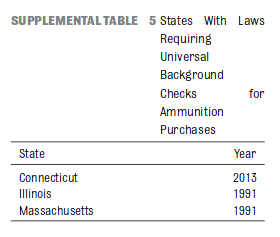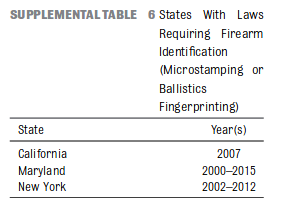I found a copy of the latest gun control paper, Firearm Ownership and Domestic Versus Nondomestic Homicide in the U.S., the summary of which I found troubling.
Oh. My.
The short form is that Kivisto et al claimed to have found a definite relationship of more firearms ownership = more domestic firearms homicides. But, somehow, not nondomestic homicides.
First, I had an issue with their “validated proxy” for firearms ownership, and wondered just what that is.
Thus, a recently developed proxy measure of firearm ownership that integrates the FS/S ratio with per capita state hunting license data (firearm ownership % = (0.62 × FS/S) + (0.88 × per capita hunting licenses) − 4.48)8 was used.
They created a model (ding!) of gun ownership rates by mathematically manipulating suicide and hunting numbers.
“FS” is suicide by firearm, and “S” is total suicides. Then they used that to create a model by multiply it by a fudge factor of 0.62. (ding!)
Moving on to the “hunting license” part of the equation; once upon a time, I sold “hunting licenses,” so I see a potential problem there. Depending on the state, there are a lot of “hunting licenses.”
- Firearm hunting
- Non-firearm muzzleloader hunting
- Non-firearm archery hunting
- Combination hunting and fishing
I know I sold combo licenses to people who said they didn’t have a gun, but wanted to keep their future options open. I sold muzzleloader licenses to people who said they couldn’t own a firearm. Just saying “hunting license” means squat. And I can’t find anything in the paper or supplemental data to indicate they used only some form of firearm-specific hunting license.
For that matter, I sold hunting licenses to adults and minors who didn’t own a firearm, but would be borrowing one.
Then there are resident and non-resident licenses. Did they break that out? They don’t say.
So they created another model (ding!) by using an undefined number of licenses, which may or may not involve firearms and multiply that by yet another fudge factor.
So firearms ownership rate equals a proxy based on fudge-factored value plus fudge-factored value.
I think there may be just a little uncertainty in that.
Moving on, I had wondered how they got domestic firearms homicide numbers from the UCR. They didn’t.
From Table 10 theycan get victim/perp relationship numbers, but not weapon type. Table 9 breaks murders down by weapon.
So they made a model (ding!) of “domestic firearms homicides” by guesstimating that those followed the same weapon percentage as all murders.
But… the model is incomplete because most states don’t report victim/perp relationship. So they created another fudge-factor and applied that to all states. A model based on a model. (ding! ding! We got a two-fer!)
No uncertainty there at all; no, sirree.
Let put all this plainly in case you lost track. They compared…
- Firearms ownership (fudged suicide rates plus fudged license numbesr that may not have anything to do with guns)
- Domestic firearms homicide (a fudged estimate of two-thirds of the “data” based on an estimate of total in a few states)
And got numbers precise to three decimal places, with overlapping confidence intervals (domestic and non-domestic homicides) and determined a definite relation of domestic to ownership, but not non-domestic to ownership.
Again, definitely different even though CI overlaps. The “difference” is lost in the statistical noise.
Modified models of modified models compared to modified models of modified models.
It’s turtles all the way down.
[Permission to republish this article is granted so long as it is not edited and the author and The Zelman Partisans are credited.]
(More Tip Jar Options) |


